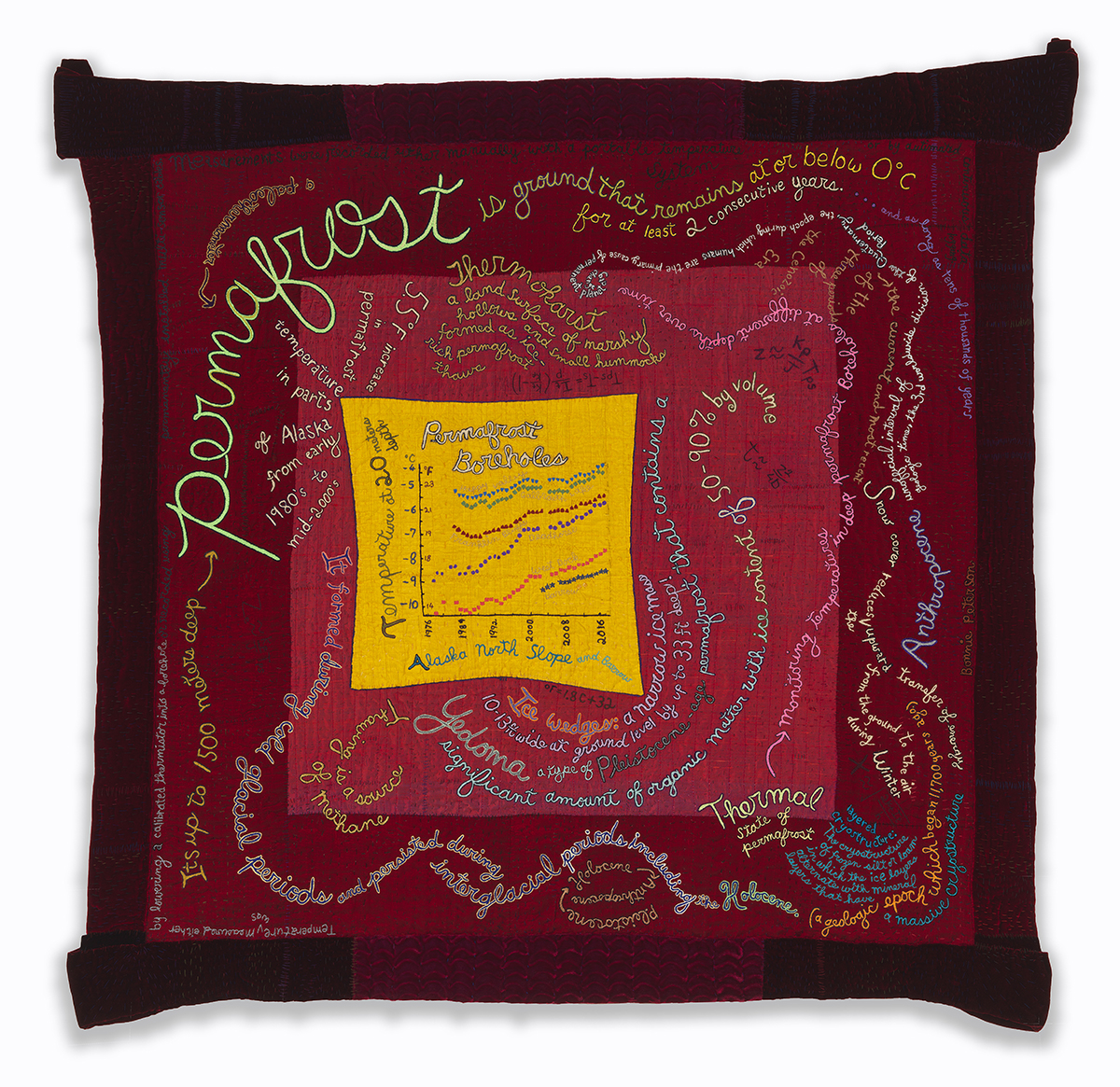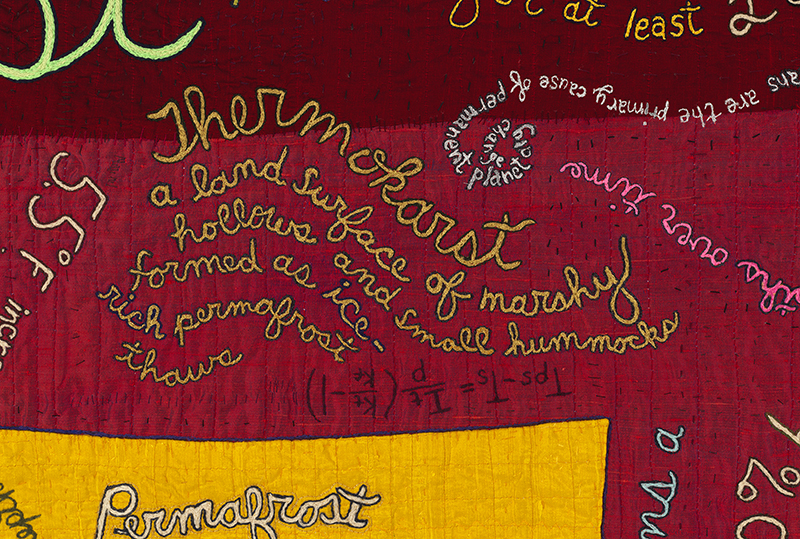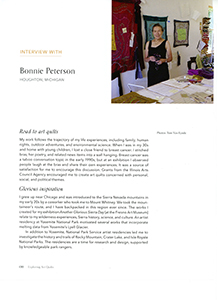

Permafrost
Boreholes, 50 H x 52 W
Embroidery on silk and
velvet.
This graph shows permafrost temperatures at 20 meters depth in boreholes
on Alaska’s North Slope for the past 40 years.
Permafrost is defined as ground (soil or rock and included ice or organic
material) that remains at or below 0°C for at least two consecutive
years. Most permafrost areas have been frozen since the last ice age,
about 10,000 years ago. They trap vast amounts of carbon in layers of
frozen organic soil varying from less than one meter up to a mile thick.
Most of the permafrost existing today formed during cold glacial periods,
and has persisted through warmer interglacial periods, including the Holocene
(a geological epoch which began approximately 11,700 years ago).
The Arctic is warming more
than two times faster than the global average. Permafrost temperatures
are rising at a much faster rate than the Arctic air temperature, and
have risen between 1.5 to 2.5 degrees Celsius in the last 30 years. As
a result, permafrost layers are melting. Permafrost thaw contributes to
a positive feedback loop that further accelerates the warming of Earth,
releasing carbon dioxide and methane directly into the atmosphere, and
contributing to the spread of devastating Arctic wildfires. Permafrost
can be used as a paleothermometer—fluctuations of air temperature
from the late 19th and 20th centuries can be obtained by measuring temperature
in deep permafrost boreholes. Warming since the late 1960s has been observed
in permafrost temperature profiles from many locations.
A graphic representation of permafrost physics is here:
https://graphics.reuters.com/CLIMATE-CHANGE/PERMAFROST/oakveelglvr/
A virtual tour through a permafrost tunnel is here: https://virtualice.byrd.osu.edu/
